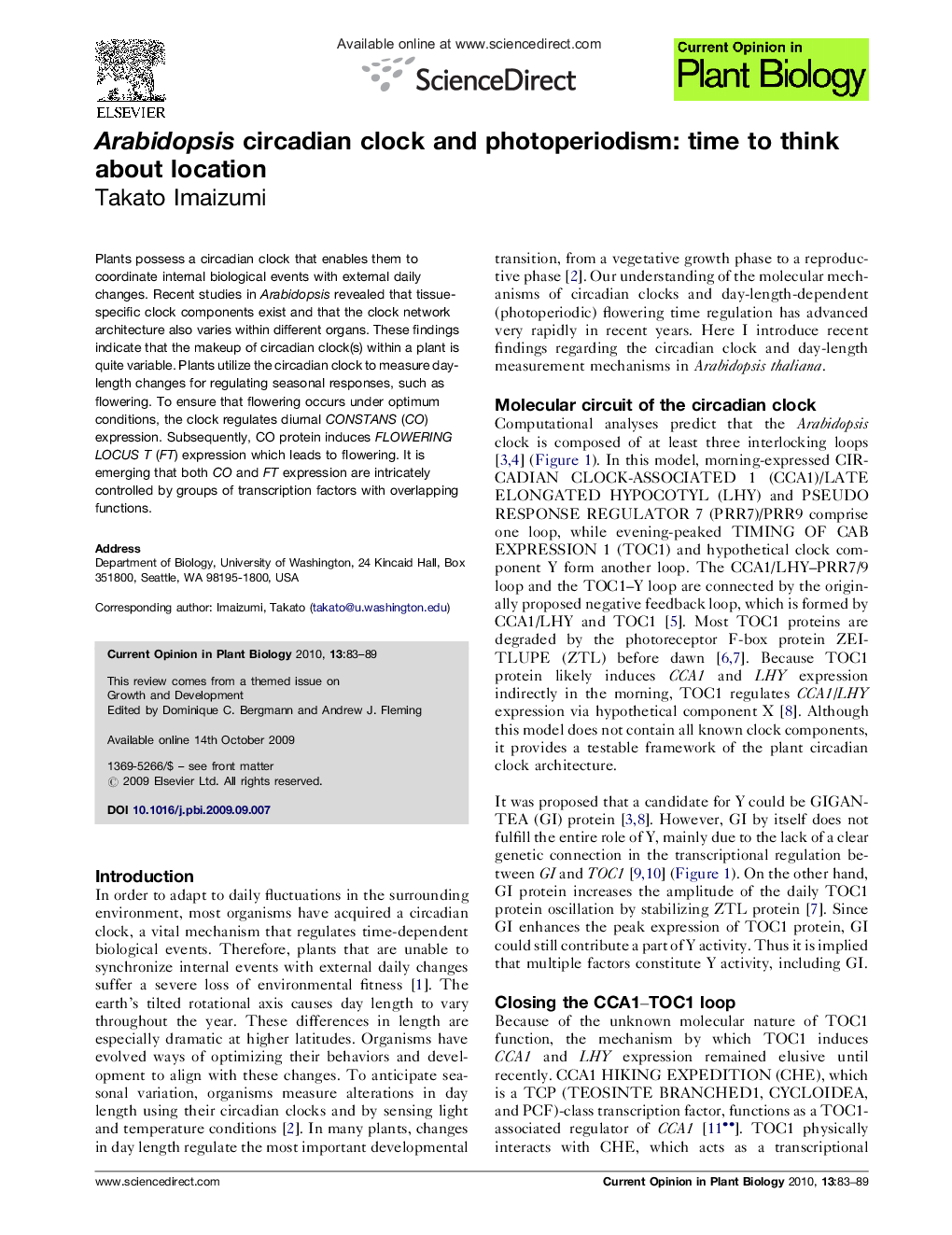| Article ID | Journal | Published Year | Pages | File Type |
|---|---|---|---|---|
| 2046243 | Current Opinion in Plant Biology | 2010 | 7 Pages |
Plants possess a circadian clock that enables them to coordinate internal biological events with external daily changes. Recent studies in Arabidopsis revealed that tissue-specific clock components exist and that the clock network architecture also varies within different organs. These findings indicate that the makeup of circadian clock(s) within a plant is quite variable. Plants utilize the circadian clock to measure day-length changes for regulating seasonal responses, such as flowering. To ensure that flowering occurs under optimum conditions, the clock regulates diurnal CONSTANS (CO) expression. Subsequently, CO protein induces FLOWERING LOCUS T (FT) expression which leads to flowering. It is emerging that both CO and FT expression are intricately controlled by groups of transcription factors with overlapping functions.
